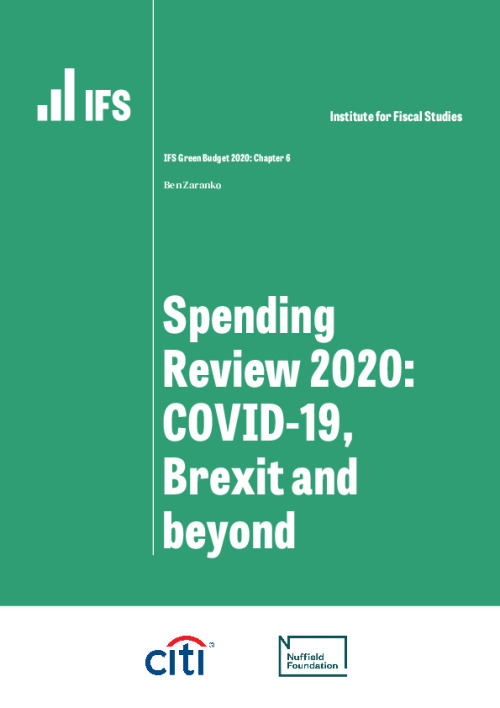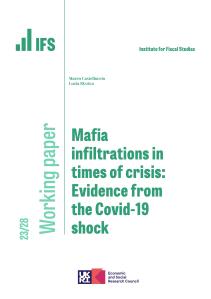The Chancellor, Rishi Sunak, has announced his intention to hold a Comprehensive Spending Review this year. The immense economic uncertainty associated with the COVID-19 pandemic, and the looming end of the Brexit transition period, make this an extraordinarily difficult time to be formulating public spending plans. In addition, the Spending Review will come on the back of the longest sustained squeeze in public spending on record, with pressure for austerity to be brought to a decisive end. Whether Mr Sunak makes the sensible decision to set only one year of spending plans, or embarks on a ‘comprehensive’ multi-year review, the process will be fraught with difficulty and delicate trade-offs.
In this chapter, we outline the public spending framework and explain which components of spending are subject to the Spending Review process, and why. We then discuss four major challenges confronting the Chancellor: the economic fallout from the pandemic; uncertainty associated with Brexit; making decisions on the back of a decade of austerity; and the government’s ambitious ‘levelling-up’ agenda. We also discuss the options facing Mr Sunak, setting out a number of scenarios to illustrate the two major choices to be made – the initial baseline of public spending and its real-terms growth rate over the next three years – and considering the implications of each. Finally, we make the case for holding a one-year Spending Review.
Total managed expenditure

Source: Figure 6.2 in Chapter 6.
Key findings
1. This year’s Spending Review comes on the back of a decade of austerity. By 2019−20, total government spending was just 2.6% higher in real terms than a decade previously, and 4.4% lower in real per-person terms. Day-to-day spending on public services was down 7% in real terms (13% per person). Outside of Health, real-terms public service spending was cut by 20% (25% per person) over the decade to 2019−20. This has been the longest sustained squeeze on public spending on record. Yet despite these cuts, on the eve of the pandemic, government spending as a share of the economy (i.e. the size of the state) was the same as in the mid 2000s.
2. Following the September 2019 Spending Round, which provided across-the-board real-terms budget increases for 2020−21, the plans published in March 2020 would have seen public service spending rising by 10.7% between 2019–20 and 2023–24. This would have reversed two-thirds of the last decade’s cuts to per-person public service spending.
3. But COVID-19 has rendered these plans obsolete. Departments have been allocated more than £70 billion this year as part of the response to the virus. A crucial question for the Spending Review is the extent to which this COVID-19 spending needs to continue into future years. If much of the spending on programmes like PPE procurement and test and trace remains, they could swallow up a huge chunk of the increase in funding pencilled in between now and 2023−24.
4. For instance, if 25% of the spending announced in response to COVID-19 needs to be permanent, that would eat up almost half of the planned £40 billion increase in departments’ non-COVID budgets between 2020−21 and 2023−24 (in today’s prices). Given the government’s commitments on the NHS, schools, the police and ‘levelling up’, that would almost certainly require another bout of austerity for some public services.
5. It is now likely that the economy will be smaller than expected into the medium run, and there are additional pressures on public spending. As a result, even if no COVID-19 spending continues into future years, it is probable that total spending will settle at a significantly higher fraction of national income than it was pre-pandemic, and higher than the 40% it was after 10 years of Labour government in 2007−
6. Given the huge amount of economic uncertainty, the Chancellor would be ill advised to embark on a multi-year Spending Review this year. Instead, he should repeat the decision he took in 2019 to hold a single-year review and postpone longer-term decisions until some of the uncertainty has dissipated.









